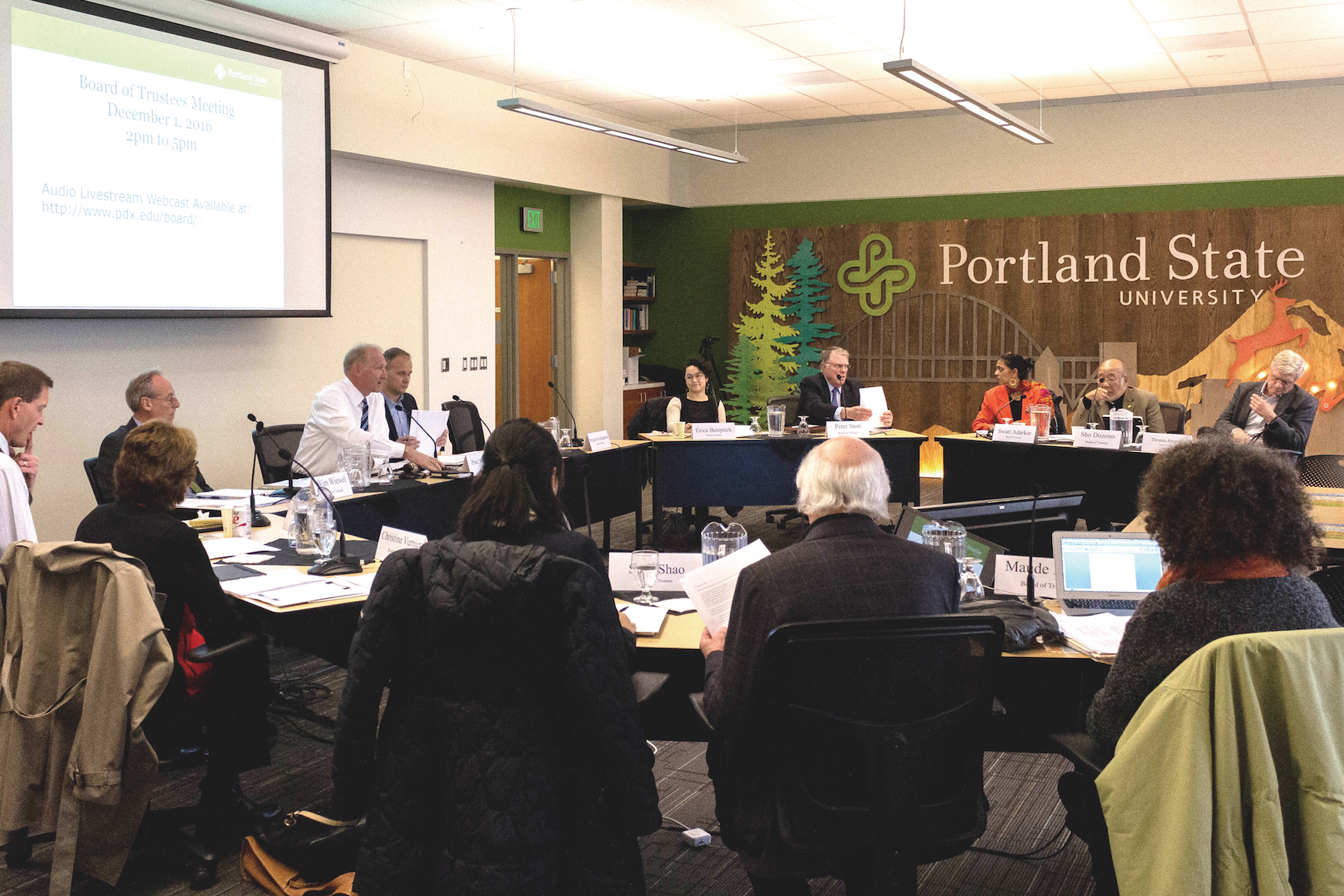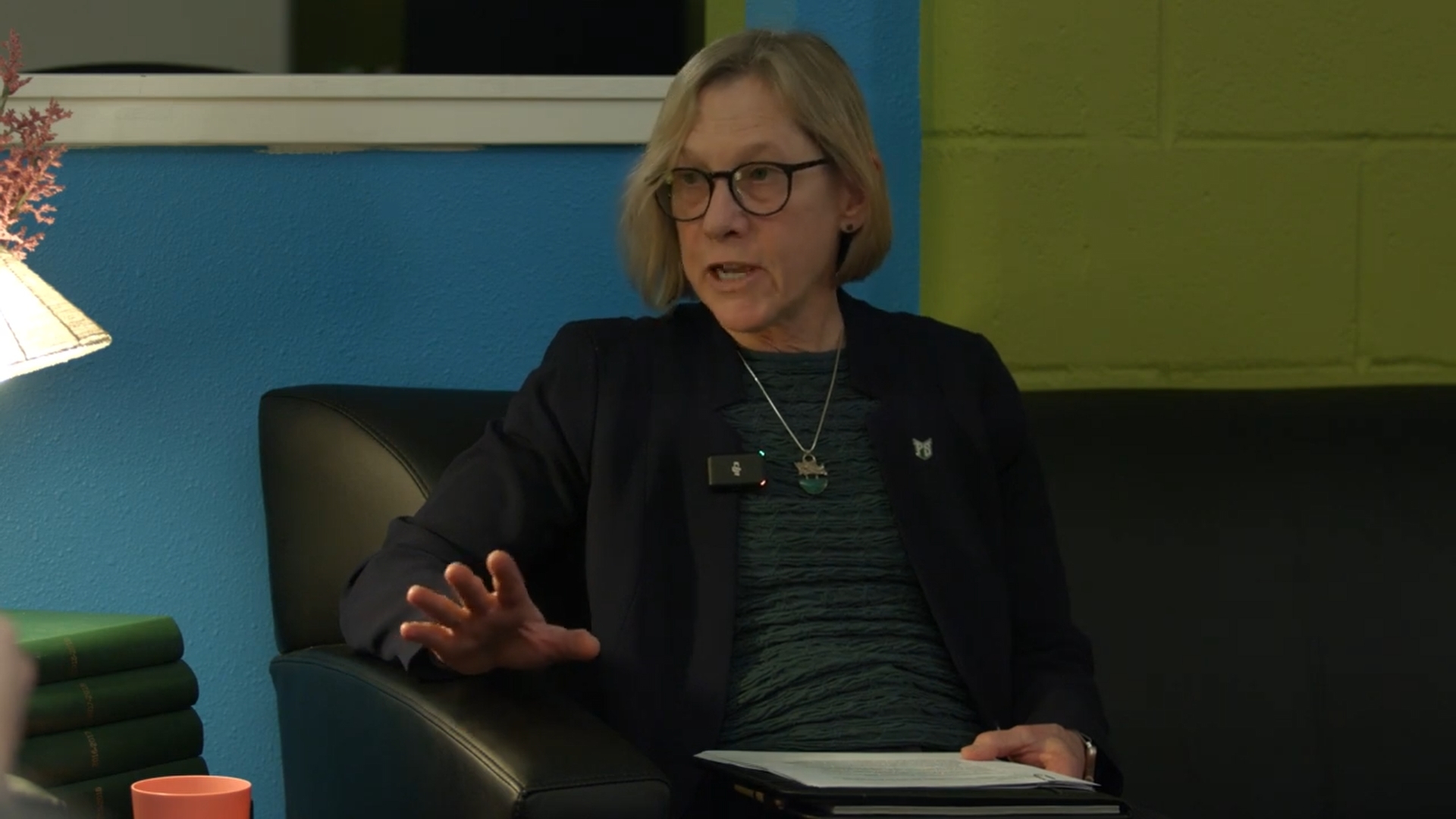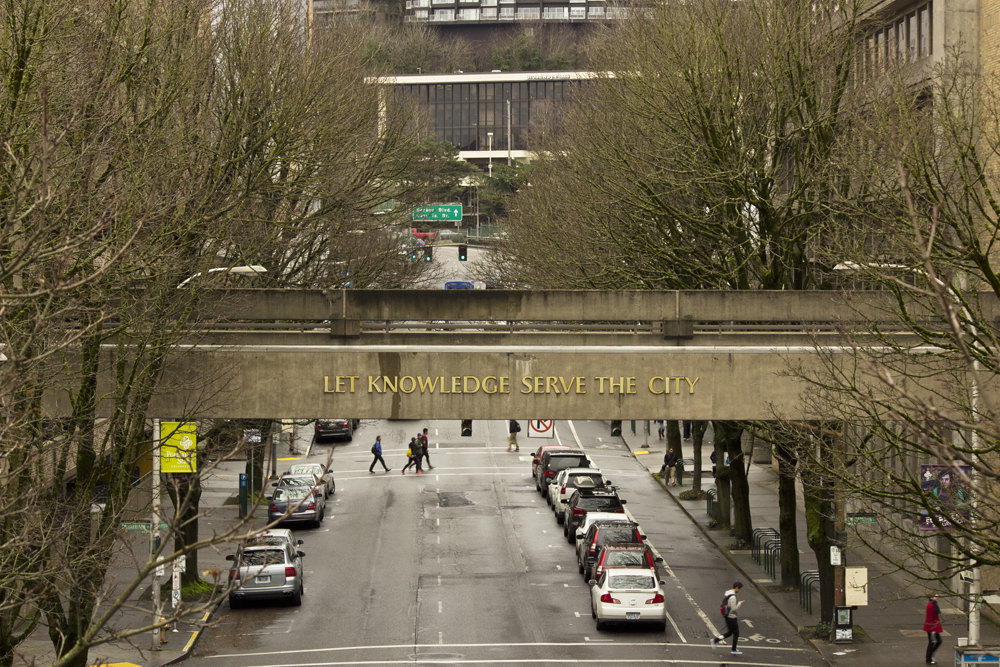On Jan. 26 Portland State Finance and Administration met with the Board of Trustees to further discuss PSU’s budget challenges and decide if a raise in student tuition was absolutely necessary. In conclusion, BOT loosely agreed that discussion of a tuition increase upward of 9 percent would be required.
PSU is expecting a deficit of approximately $14.3 million for the 2018 fiscal year budget, though the exact number is unknown as tuition and state funding figures have not been finalized.
To maintain the current service level for the university, there is often an increased need in funding from the previous year.
“For FY18, we anticipate that costs will increase by approximately 4.2 percent above the FY17 general fund budget,” said Andria Johnson, university budget director at PSU. “This factors in costs related to collective bargaining agreements, increases in the retirement and health benefit rates, and general inflation of 2 percent on most services and supplies.”
Pre-budget concerns at the meeting included an introduction to new hires at PSU: Karen Powell as director of Facilities and Property Management, Isaac Dixon as associate vice president for Human Resources, and Vince Elmore as the new campus police lieutenant. Elmore spent 27 years on the Portland Police Bureau.
Dan Zalkow, associate vice president of Planning, Construction & Real Estate, presented on PSU’s newest capital project. Construction on a new building at 4th and Montgomery would need BOT approval by April of this year to stay on schedule for a September 2020 opening and to best utilize government funds. The building would house the graduate school of education and community retail space.
Kevin Reynolds, vice president of F&A, presented on long-range institutional planning within the General Fund Budget. He was clear that projections have to be made to do this, including state funding figures, enrollment figures, enrollment makeup, and how much school costs will change. The forecast didn’t feature an increase in staff.
“I’d be happy and delighted for us to push and pull those assumptions, but we have to make assumptions,” Reynolds said.
There has been a decline in student enrollment at PSU, most notably with the loss of nearly 2,000 in-state students over the last five years. This means less tuition and a lower degree of state funding.
Reynolds suggested PSU build a budget based on baseline expenses rather than assuming PSU can increase tuition over the next few years. F&A uses yield and persistence trends for the last five years to determine a baseline with minimal growth assumptions. F&A also presented a model with a 2–3 percent increase in student tuition revenue.
PSU tuition has increased every year since 2006–07. The largest increase was in 2007–08 at approximately 11 percent. Some years saw increases as low as a 1 percent, and larger increases were often made on years where larger increases in enrollment happened.
Provost Sona Andrews spoke on academic opportunities and enrollment planning, specifically focused on strategic enrollment planning, how to get more students to attend, and an estimation of where students will enroll. Andrews also mentioned the increasing demand for online courses at PSU.
PSU schools and colleges turned in their own strategic enrollment management plans to the department of Academic Affairs on Jan. 25, and that data will be analyzed and pushed upon.
Tuition makes up a significantly larger portion of PSU revenues, approximately twice as much as state funding.
One potential model F&A brought to the meeting included a 9 percent increase for in-state students in the first year of a biennial, and 5 percent for the second year, with out-of-state tuition raising 5 percent each year. This is a model which could continue for multiple biennials.
BOT can make decisions on tuition, set funds aside for risk abatement, and decide expenditure reductions. They do not control enrollment growth or state allocations.
“I think that the way that I interpret what you are saying here—we have to raise tuition aggressively, unfortunately,” said BOT member Irving Levin, speaking to Reynolds. “Then we have to cut what we can cut now. But then we have to continue to look at how to rationalize cost in the face of something that’s just getting worse and worse.”
BOT member Christine Vernier said she believed the state would have to figure something out in the upcoming years, most likely through another tax measure.
“I worry that driving out higher levels of reductions now takes away any infrastructure, any capabilities to deal with shifting enrollment battles or recruiting,” Reynolds said.
“The F&A committee will meet again in April, at which time they will be reviewing a tuition recommendation from the president as well as other business,” Johnson said. “The F&A committee will then take their recommendation to the full Board later in April, who will vote on the actual tuition increase.”






